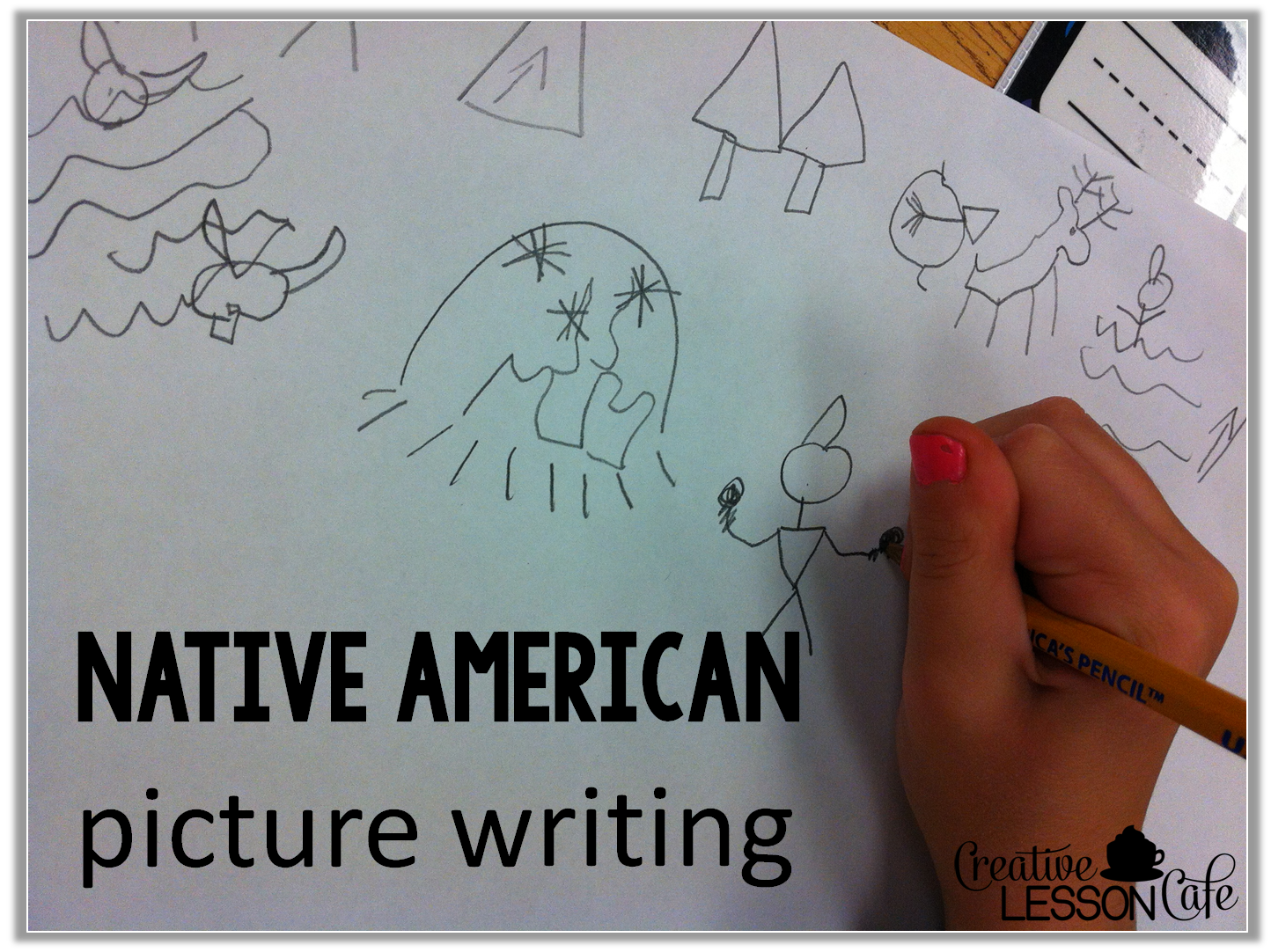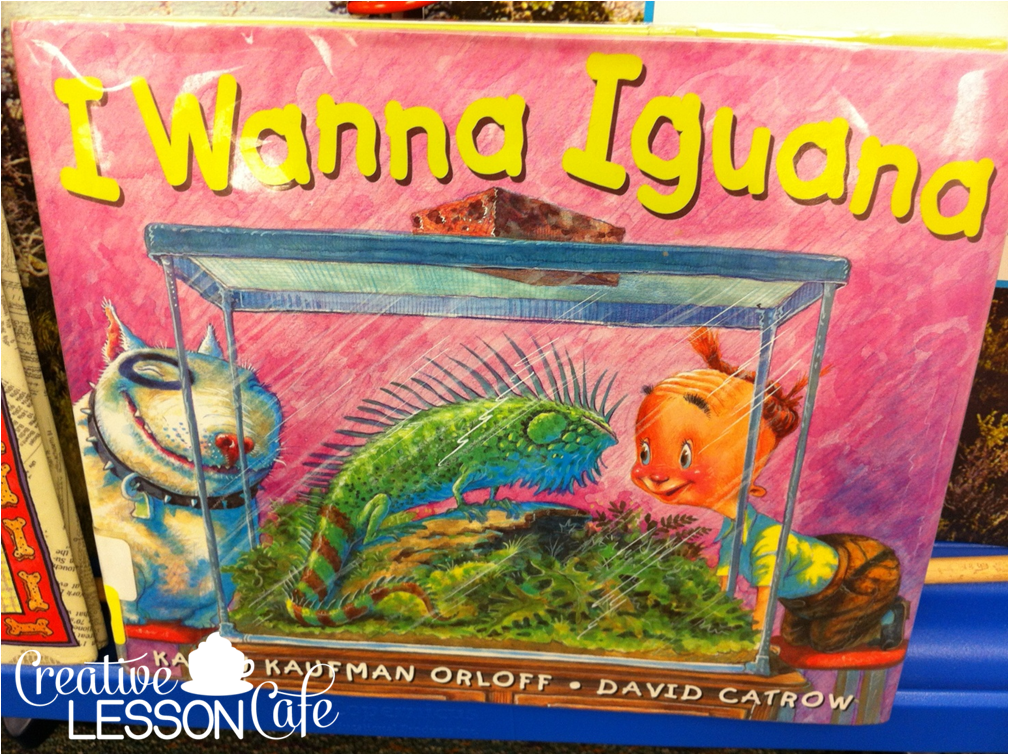Welcome, teachers, to the world of close reading in the primary grades! As we begin this challenging but rewarding strategy together, you can find some close reading tips and easy things to do NOW to encourage your young learners to do some higher level thinking during reading. Many teachers are struggling with how to introduce this with students who are just becoming proficient readers, but it CAN be done!
Close reading offers a rich opportunity to deepen comprehension, foster critical thinking, and cultivate a love for reading at an early age. In this post, we’ll take a look at practical tips and strategies tailored to the unique needs of primary classrooms, empowering you to guide your students towards becoming confident and thoughtful readers. Let’s get started and discover the secrets of teaching close reading with some helpful tips so you can feel confident as you introduce this skill in your reading curriculum!

Close reading is a strategy that helps students understand complex texts by using four phases of understanding: literal, analytical, conceptual, and evaluative. Here are some skills for students to use when close reading:
What will students do differently?
Read strategically: Read the text silently, but read difficult parts out loud and slowly.
Annotate: Circle unfamiliar words and note words or phrases that stand out.
Reread: Reread the text multiple times to uncover layers of meaning.
Ask questions: Prepare questions for discussion and answer text-dependent questions.
Focus on the author’s message: Understand what the author is saying and their purpose.
Analyze: Analyze the text and illustrations.
Use text evidence: Use text evidence to defend ideas.
Respond: Summarize what you read, draw conclusions, and include evidence to support your ideas.
Reflect: Plan out what you are going to say or write, and turn in your annotated reading.
Don’t summarize: Assume that your reader is familiar with the text and characters, so you don’t need to provide an extensive plot summary or character description.
Work from the text: Don’t paraphrase what the text says in your head, but work from the actual text.
What will the teacher do?
Start Early: Introduce close reading at the beginning of the year and practice regularly.
One Task at a Time: Focus on one direction per reading session to avoid overwhelming students. In the Groundhog Day close read above, the students are looking for new vocabulary or words the cannot decode first.
Use Clear Annotations: Provide specific annotation instructions and symbols for each reading. Use just a few easy to draw symbols.
Color Coding: Use crayons to highlight important information in the text for better comprehension.
Model Annotations: Demonstrate how to annotate effectively for students.
Read with a Pencil: Provide a simple start to annotation mark ups. Giving students a handy reference in the form of a bookmark is helpful.
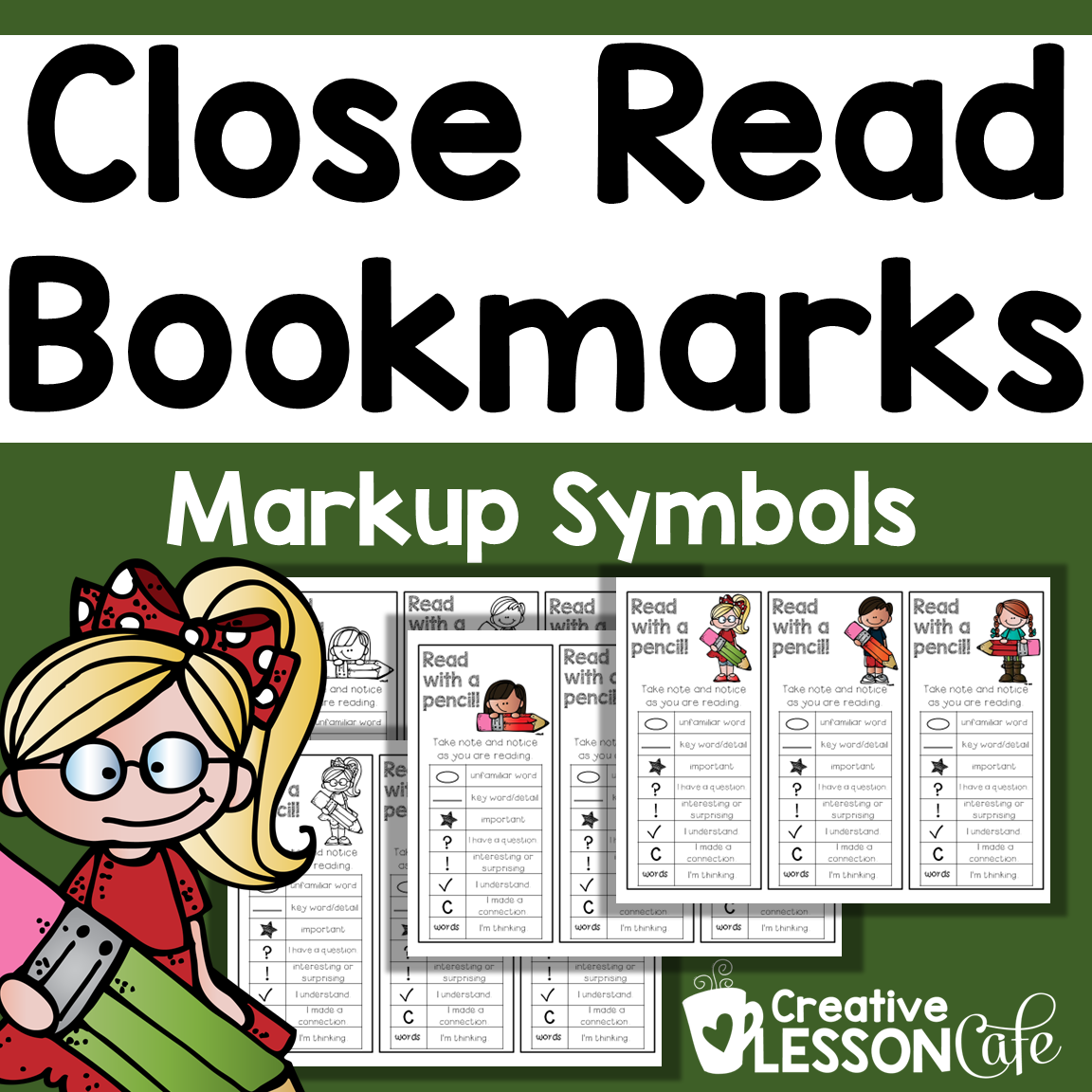
I had just taught my third graders how to annotate text and these were the perfect reminder resources for them.
Diedre T.
Encourage Explanations: Prompt students to explain their annotation symbols to a classmate during a partner pairing session.
Different Viewpoints: Acknowledge and accept different viewpoints and ideas.
Student Conversations: Make time for student-led discussions during close reading sessions.
Small Groups: Conduct reading lessons in small groups for better engagement when you begin close reading activities.
Modify Reading Selections: Choose texts based on student ability and reading level and differentiate whenever possible.
Explore Genres: Encourage students to explore both fiction and nonfiction for close reading. The text can be an article, a reading passage, a page from a book or even a paragraph.
Transfer Skills: Teach skills that can be applied to different texts like looking for text evidence.
High Interest Selections: Provide texts that are fun and engaging for various close reading strategies.
Embrace Struggle: Support students through challenges in the learning process.
An Activity Worth The Time it Takes
You may also have a struggle or two along the way, but a rich close read activity is so rewarding and totally worthwhile. It’s very exciting to watch even the youngest of students begin to think critically about what they read! By implementing these simple ideas, you will be well on your way!
Close Read Teaching Printables
If you are looking for close read selections that are perfect for second and third grade, you can find them at my TPT store.
Spring Reading Butterfly Life Cycle – Butterflies Close Read (2nd and 3rd)
When spring comes around and it’s time to hatch butterflies or study life cycles, your class will be able to read and learn more about the stages in the life cycle of a butterfly with this mini-packet to be used for close reading activities with small groups or the whole class. This resource can be integrated with your life cycles lessons to enrich your spring science unit!
This item contains one nonfiction passage written in the second grade and third grade text complexity band. It is an overview of the life cycle of a butterfly through these stages – egg, larva (caterpillar), pupa (chrysalis), adult. 🙂
**See my store for life cycle flap books and PowerPoint lessons you may also enjoy using with your class!
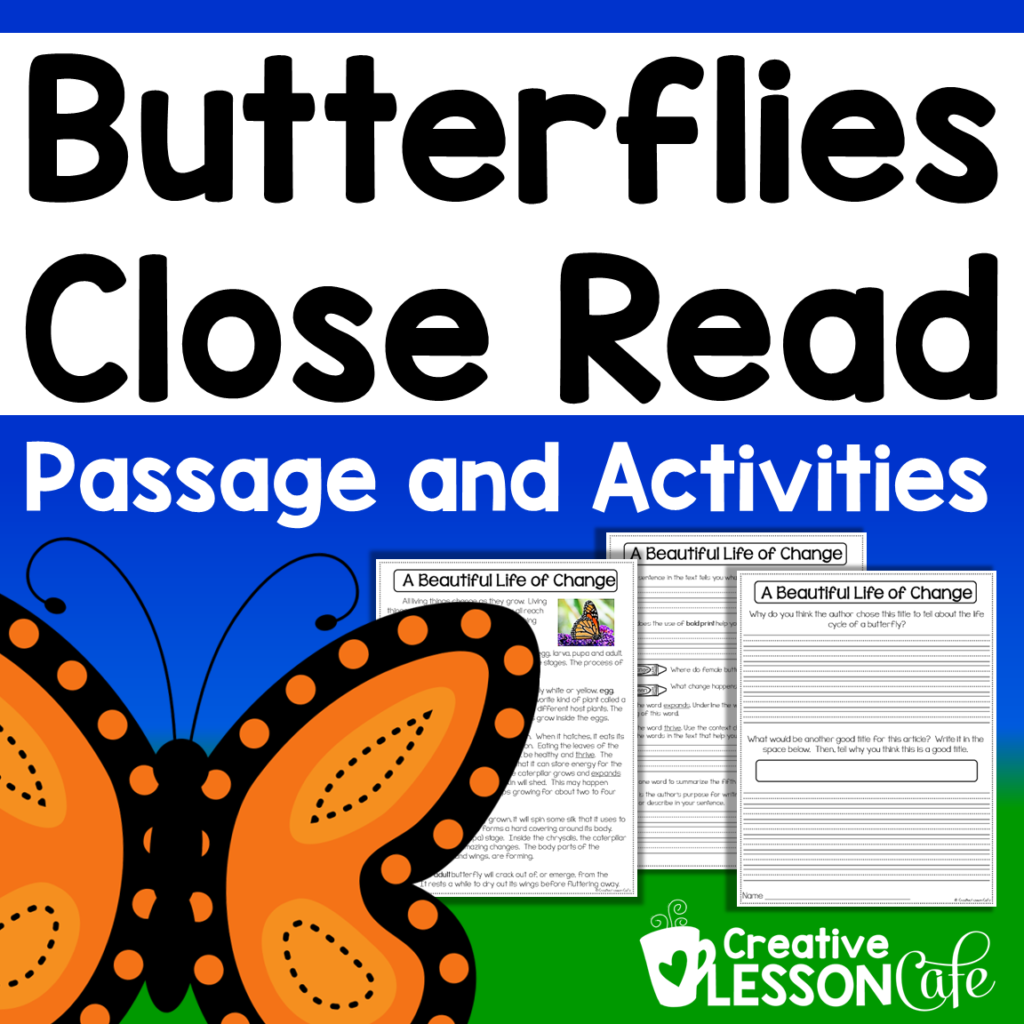
Valentine’s Day Close Reading | Valentine’s Day Activities | Informational Text
When stores and classrooms fill up with candy hearts in February, your class will be able to read and learn more about the interesting history behind these sweet little love notes with this mini-packet. It can be used for close reading activities with small groups or the whole class. This close read activity is an overview of the history of conversation hearts and a description of how they have changed over the years. 🙂

MLK Close Reading Activities for Second and Third Grade
This packet can be used with your unit for Dr. King Day, during Black History Month or any time of year to honor a man with a dream! No dates are included for his major life accomplishments and no mention of an assassination is made. It is an overview of Dr. King as an important person in the history of our country who had a dream for equality and peace. 🙂

Groundhog Day Close Read and TDQs | Informational Text Passage
Teaching close reading strategies and providing regular practice are a great way to increase rigor within your reading program. This packet can be used with your unit for Groundhog Day or any time of year you are working on strategies for reading informational text!
When the groundhog comes out of his burrow on February 2nd, your class will be able to read and learn more about this underground home with this mini-packet to be used for close reading activities with small groups or the whole class.
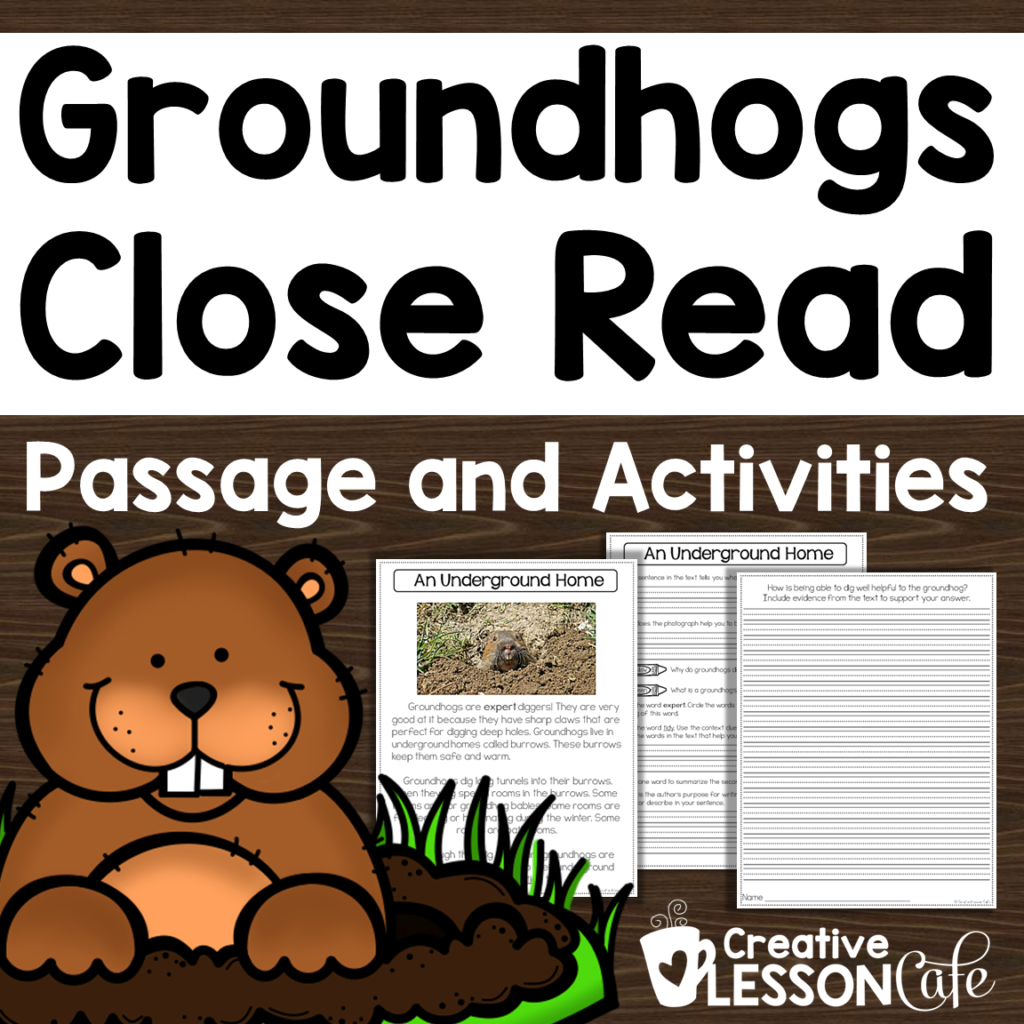
Spiders Close Reading Activities | Second and Third Grade Reading Informational Text
This Spiders Close Read teaching resource is the perfect way to engage your second and third graders in learning about spiders in October. It’s a great supplemental resource to add to your spider science unit! The packet includes a variety of comprehension and writing activities, including:
Informational text passage: Students will learn about the different types of spiders, their body parts, how they catch their prey, and the ways in which they are beneficial to the environment. Lexile Level: 730
Constructed response pages: Students will answer questions about the text passage and provide evidence to support their answers.
Drawing and illustrating activities: Students will draw and illustrate ways in which spiders catch their prey.
Facts about arachnids: Students will learn about the characteristics of arachnids and how they differ from insects.
Ways in which spiders are amazing and helpful: Students will learn about the ways in which spiders are beneficial to the environment and to humans.
Graphic organizer: Students will utilize a graphic organizer to help them use text evidence to support their answers in writing.
Scoring rubric: To use as an assessment tool for the writing pages
This packet is perfect for use in the classroom or at home. It is easy to follow and includes all of the materials you need to get started! Just print and copy a packet for each student or use them one at a time as individual worksheets for your class. Then your students can to get to work reading and writing about spiders!
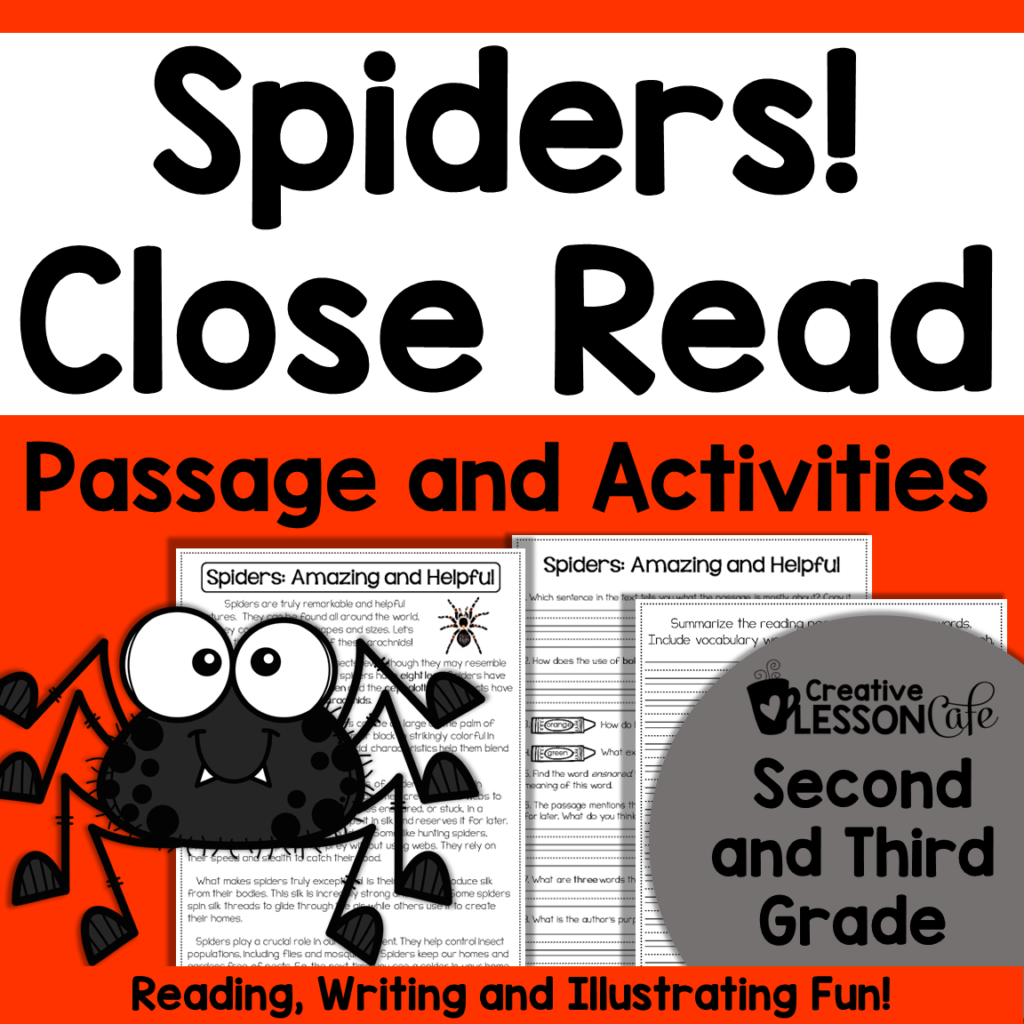
As you can see these close reads are perfect for a variety of high interest and seasonal topics. I think your primary students will love them!
Remember the close read tips and jump right into using this powerful reading strategy with your class!
Happy teaching!



